EMPLOYMENT IN THE MARKET ECONOMY IN ... - Eurostat - Europa
EMPLOYMENT IN THE MARKET ECONOMY IN ... - Eurostat - Europa
EMPLOYMENT IN THE MARKET ECONOMY IN ... - Eurostat - Europa
Create successful ePaper yourself
Turn your PDF publications into a flip-book with our unique Google optimized e-Paper software.
Employment in the market economy in the European Union<br />
— an analysis based on the Structural Business Statistics<br />
Introduction<br />
The Structural Business Statistics (SBS) represent the<br />
most complete source of data on businesses in the European<br />
Union. The SBS provide information about most aspects<br />
of enterprise activity and break this down by<br />
detailed economic sector in each of the EU Member<br />
States (see Box on this page). The purpose of this publication<br />
is to increase knowledge and understanding of<br />
employment and business related issues across the European<br />
Union, including at regional level. It sets out a<br />
fairly complete and coherent picture on the scale of business<br />
output and employment in different parts of the Union<br />
and the division of these between economic sectors of<br />
activity. It also indicates the relative importance of different<br />
sized enterprises, their productivity and costs of production<br />
and the amount of investment undertaken. The<br />
fact that the data on employment and business related<br />
variables in the SBS (output, value-added and so on) are<br />
compiled and classified on the same basis ensures that<br />
analysis undertaken using them is internally consistent.<br />
The focus of this report is on employment. The aim is<br />
threefold. First, it is to present the data which are available<br />
from the SBS and which are collected from enterprises on<br />
an annual basis. Secondly, it is to examine how the number<br />
working in different parts of the business sector, in different<br />
industries and services, varies across the EU.<br />
Thirdly, it is to analyse the relationship between employment<br />
and other key variables, such as, value-added, labour<br />
costs and investment, in industry and services in<br />
different EU Member States.<br />
This both updates and extends the analysis contained in<br />
the first report published in 2003. The main extension is to<br />
cover the new Member States entering the EU in May<br />
2004 as well as Bulgaria and Romania and to compare<br />
the structure of employment in these countries with that in<br />
the rest of the EU. Although there are a number of gaps in<br />
Structural Business Statistics<br />
The SBS are compiled from data collected by National<br />
Statistical Offices from enterprises of all sizes. At present,<br />
they cover all industries and services classified to NACE<br />
Rev. 1 sectors C to K, though excluding sector J (financial<br />
services). They, therefore, exclude public administration,<br />
education, health and social services (NACE Rev. 1 sectors<br />
L to N) as well as personal and community services<br />
(NACE Rev. 1 sectors O to Q). In principle, according to<br />
the regulations (EC, EURATOM N° 58/97 of 20 December<br />
1996 concerning structural business statistics, OJ No L<br />
14/1 of 17.1.97, p.1)), they can cover all sectors except<br />
public administration (NACE Rev. 1 sector L), but so far<br />
the effort has been concentrated on collecting data for the<br />
enterprise sector, ie on market rather than non-market activities<br />
(see Box below on the division of economic activity<br />
by NACE sector).<br />
Within the sectors covered, activities are disaggregated<br />
to a NACE 4-digit level within industry, though data are<br />
more complete at a NACE 3-digit level, and to a NACE<br />
3-digit level in services. The variables contained in the<br />
SBS include the number of enterprises, turnover, the<br />
value of production, value-added, wages and salaries,<br />
gross investment and hours worked as well as the number<br />
of persons employed and the number of employees.<br />
They also include a number of ratios and calculated variables,<br />
such as the share of employment in particular industries<br />
in the total for manufacturing, investment per<br />
worker, social charges as a share of personnel costs and<br />
the growth of employment.<br />
Data on the new basis are available for all EU15 Member<br />
States except Greece from 1995, though are less complete<br />
and of more questionable accuracy for the years<br />
before 1999.<br />
Data are also available for the new Member States, except<br />
Malta, and for Bulgaria and Romania. These cover<br />
3


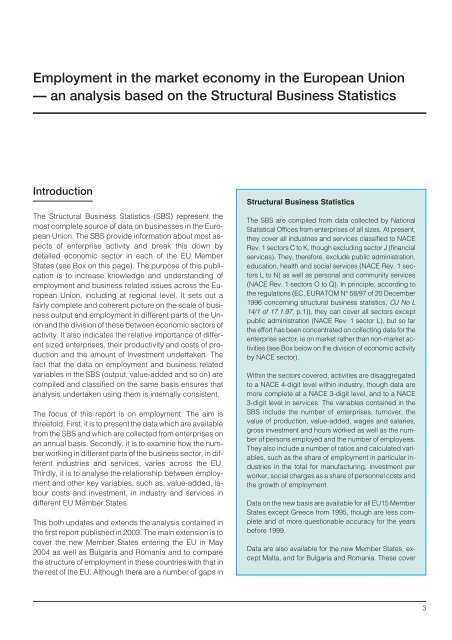
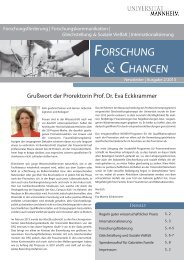
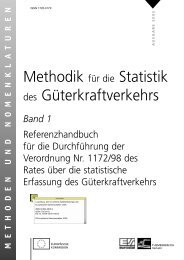

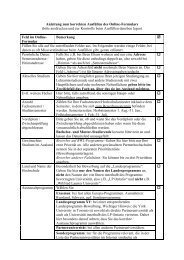
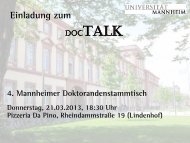

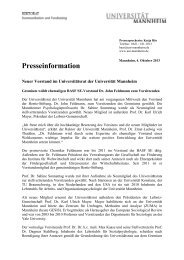


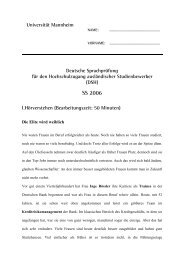
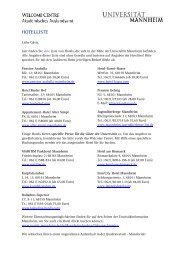
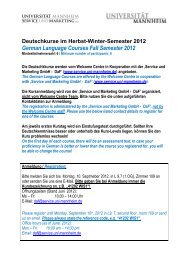
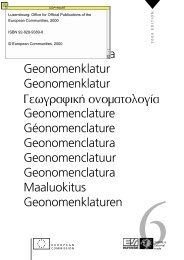
![226. [Augsburg], 27. Oktober 1562 An Joachim Camerarius d. Ã ...](https://img.yumpu.com/27559109/1/184x260/226-augsburg-27-oktober-1562-an-joachim-camerarius-d-a-.jpg?quality=85)